The Move
I Could Find a Good Time
Albums
Reviewed: Move,
Something Else, Live at the Fillmore,
Shazam,
Looking On,
Message From the Country.
An English band which never really crossed over to the US, The Move had
successful singles out of the gate; their first in
late 1966 went to number #2, and their singles kept
having success
through
1970. But they shed original members along the way, and never
really knew how to put together a good album, padding out song lengths
and leaving (good) singles off. Guitarist Roy Wood was the
primary writer, and he had an early interest in classical riffs,
borrowing from The 1812
Orchestra
for their first single. But he never developed a good way of
integrating classical influences, relying on disjointed sections or
esoteric instruments to carry songs. Early on the band was
all
over the place for influences, but with people leaving, Wood wound up
bringing Jeff Lynne aboard for a couple of albums with a consistent
sound which they prepared for the Electric Light Orchestra. I
don't have a singles compilation (one does exist) but I am fairly
certin it would get a higher rating than any of the albums below.
Personnel: Carl Wayne (vocals),
Roy Wood
(vocals, guitar),
Trevor Burton
(guitar), Ace Kefford
(bass) and Bev Bevan
(drums). Burton, Wayne and Kefford quit in succession in
69-70, with Rick Price
(bass) coming aboard in 1969 and Jeff
Lynne (guitar, piano, vocals, terrible production) in 1970.
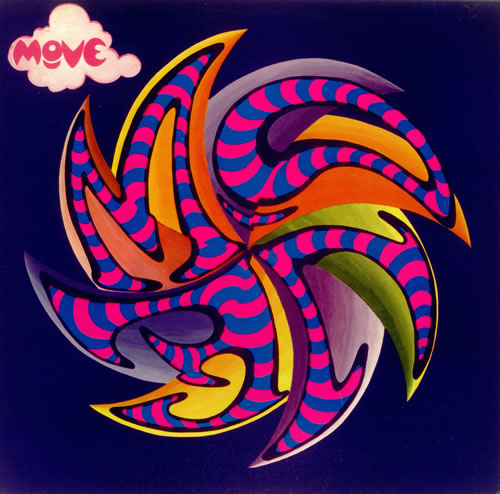 Move (Mar.
1968), **1/2
Move (Mar.
1968), **1/2
I should probably like The Move more than I do, because they hit a
bunch of my soft spots: mod sound! whimsical and/or psychedelic lyrics!
good musicianship! but most of their material sounds like dated
reflections of more popular acts.
Guitarist and chief songwriter Roy Wood had an interest in
classical influences from the start, but many of his arrangements sound
like someone who heard "Eleanor Rigby" and ran with it.
Furthermore, producer Denny
Cordell
gave everything a light or tinny production, undercutting the strength
of the band's sound. If that was not frustrating
enough, most of the album was only released in mono (yes, even the
stereo version was mostly in mono), and not a punchy mono either.
The result is that the band
often sounds like A
Quick One
or "Pictures of Lily"-era Who, with odd little stories in their songs,
lots of rhythm guitar, punchy bass and strong vocals, but then mixed
with Byrdsian guitar and classical string
arrangements. (The kitchen sink diversity approach extended
to
their vocals - despite having a dedicated singer (Carl Wayne) who was
like Tom Jones if Jones was cool and not hammy, Wood also sang a lot of
tracks, and the others got spotlights as well). Almost
everything on Move
sounds like it would
fit on a single, and the best tracks were from the band's two latest
singles: "Fire Brigade" is hands-down the best track, an uptempo pop
song with Wood adding little Byrdsian guitar phrases. "The Lemon
Tree" and the trippy "Flowers in the Rain" are also both fine pop
songs, with a good match of catchy melodies and goofy period lyrics.
The remainder is a lot of
pop songs with slight psych production flourishes, sometimes undone by
Wood's lyrics ("Yellow Rainbow" with some backwards drums and Wayne
singing about "find the yellow rainbow"). But a lot of it
sounds
like a heftier take on pop acts like The Beatles, and the band comes
across as followers.
(There are also two out of place covers, Eddie Cochran's
"Weekend" and "Zing! Went the Strings of My Heart." The
former is
understandable - even The Who recorded Cochran's "Summertime
Blues" around this time, but wisely didn't release the studio version.
The latter is junk.) Power-pop, but with the
power cut.
It
probably
did not help that the band's first two singles (which are also pretty
good) were on a different label, and not included on the
album. The album was never released in the US.
 Something
Else From the Move EP
(rec. Feb. 1968, rel. Jun. 1968), ***
Something
Else From the Move EP
(rec. Feb. 1968, rel. Jun. 1968), ***
A live EP, since re-released with bonus tracks.
This band's club act is far more raucous than their poorly produced
first album, and served as a good counterpoint. They tackle
predominantly American artists, ripping through West
Coast
tracks (The Byrds'
"So You
Want to be
a Rock 'N'
Roll Star", Love's "Stephanie Knows Who" ) and soul ("Piece of My Heart" and "(Your
Love Keeps Lifting Me) Higher and
Higher") and retro sounds of "It'll Be Me" (which had been the B-side
to Jerry Lee Lewis's "Whole Lot of Shakin' Going On"). Only
more
odd choice is a cover of Spooky Tooth's "Sunshine Help Me" from the
prior year. A good
add-on to the CD release of Shazam,
although I'm not sure how exciting others will find it today.
The
band released three more singles between The Move and Shazam including
the "'Penny Lane' in a minor key" hit, "Blackberry Way."
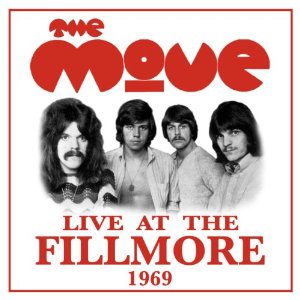
Live
at the Fillmore (rec. Oct.
1969, rel. 2011)
Just a few comments about this well-recorded live set from the
Shazam era.
The most surprising thing is that the long songs on Shazamkept
the same long, seemingly disconnected codas in the live
performance as well. "Cherry Blossom Clinic" and "Fields
of
People" keep their poorly integrated portions, which are just as
awkward in concert. Nothing too exciting in the set list,
which
is
mostly
drawn from Shazam,
and a long
take on "I Can Hear the Grass Grow" which is probably the best track
because it has some verve. The other songs are a cover of The Byrds'
"Goin' Back" and a pair of Nazz tracks. Their awareness of
The
Nazz is pretty interesting, as both bands tried to give some heft to
pop music, and had strangely divergent paths. For Shazam super-fans,
who won't mind hearing identical arrangements.
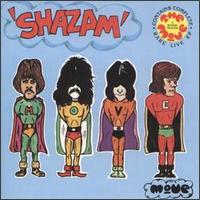 Shazam
(Feb. 1970),
**1/2
Shazam
(Feb. 1970),
**1/2
Power correction. Much heavier in places, as the band
stretched
songs to progressive rock lengths, but still split between originals
and covers The album starts with "Susie"
with
Wood cranking up the guitars for a heavy sound, and using a far
grittier voice than he used on
Move.
When matched with Wood's more prominent acoustic
guitar and
12 string, there a strong Byrds-play-power-pop vibe (especially in
their cover of "The Last Thing on My Mind"). But, while
Wood pushing the song lengths out, they didn't have enough
material to
fill the time. So both "Susie" and a good cover of "Don't
Make My
Baby Blue" both use very slow tempos. And while the band did
a
better rendition of "Cherry Blossom Clinic" than the one on Move (here with
"Revisited" appended), a four minute classical medley ("Jesu
Joy of Man's Desiring", part of The
Nutcracker
I think, etc.) making up the back half of the almost 8 minute song.
Which was fairly novel, in that the band was not relying on
(or
even using) a keyboardist to push this direction (unlike, say The
Nice), but repetitions. The problem is even worse
on a cover
of
Ars Nova's "Fields of People" which does not justify its 10
minutes, most of which is repetition, then a take on raga (I think)
using guitars. On
the lighter
side, Wayne's final showpiece was "Beautiful Daughter" - a
short
ballad with a string quartet, where he got to fully belt things out. Not quite the rucksack of
styles that was Move,
but still a band trying to figure out how to integrate their classical
interests (or find if
they wanted to be everything). Produced by Wood, Wayne and
Price.
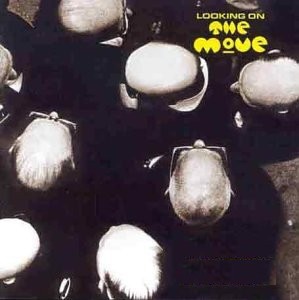 Looking
On (Oct.
1970), ***
Looking
On (Oct.
1970), ***
Their
strongest album yet, and it still has serious
problems. With Wayne gone, Wood added Jeff Lynne to the band,
which matched perfectly with a) his interest in classical sounds and b)
his inclinations to borrow heavily from The Beatles. At the
time, Wood decided to follow The Beatles’ heavier sound - that strain
through tracks like “Helter Skelter” and “Come Together,” along with
some of the esoteric instrument choices like the halcyon days of
Stones’ Satanic
Majesties.
It’s not as outlandish as it may seem - the Beatles had just
broken up and The Move had a bunch of hit singles in the time period.
The problem was that Wood really didn’t know how to write
longer songs, which why Shazam
was a bit of an unruly monster of pop song and often unrelated
instrumental passages stitched together. Looking
On
is more loud, slow and bluesy, but without any of the weight of a Black
Sabbath or an actually heavy band. You expect that Wood might
kick into a fast solo, but eventually you realize he intends to lumber
onwards. (Also, this and the next album were basically made
to fund the Electric Light Orchestra). “Brontosaurus” is
great example of where Wood got it right - matching a plodding, bluesy
riff with goofy lyrics about a dance craze.
Lynne
had just been with the group The Idle Race, which seemed to specialize
in cloying second-rate Beatles pop knockoffs. I suspect Lynne
learned a lot about studio techniques because his own singing voice is
not very good-- at his best, he sounds very Lennon-at-the-piano
(“What?”). But his production techniques (which my notes
summarize as “hella room mics” and involve odd panning) could also be
seen as the mixing-board chaos of the psychedelic era taken
in an obnoxious direction. Even here he
overproduces things on his two post-psych? tracks, with
strange harmonies and odd drum mixes (“Open Up Said the World at the
Door” and “What?”). But
the presence of actual production (despite Lynne’s techniques) improves
on the live-in-the-studio nature of Shazam,
and Wood’s Brian Jones-like willingness to play any instrument he can
find makes the tracks unpredictable and fairly interesting (“Turkish
Tram Conductor Blues”, “When Alice Comes Back to the Farm”).
I’m less sold on his guitar playing, when he cranks out
bluesy riffs on the title track he sounds like Procol-era Robin Trower.
His attempts ones are perfectly decent. Even
Lynne’s songs have some good ideas at their core (the piano riff which
re-occurs in “World at the Door”, and the chorus in “What?”).
Still, the album is bookended by two tracks where Wood
stretches the material too far. The opener is the clunky
power-chording rock of “Looking On” where Wood pulls a Shazam
after four and a half minutes and detours into a descending chord
pattern for his soloing on sitar, oboes, etc. This works,
somehow. The same cannot be said for “Feel Too Good” which
brings in the female backing vocals, then turns into a mid-tempo “jam”
where the solos do not add much. (Sorry, Lynne, your piano
skills are not best suited for this.) Also, a good portion of
this section is spent on a descending chord pattern, before dumping
into a nightmare doo-wop coda that Lynne phased into eternity.
Still, Looking On is
a
halfway decent take on late-period Beatles, with everything cranked up
and heavy instead of light like Hot Wacks,
or burnt
out like Parachute.
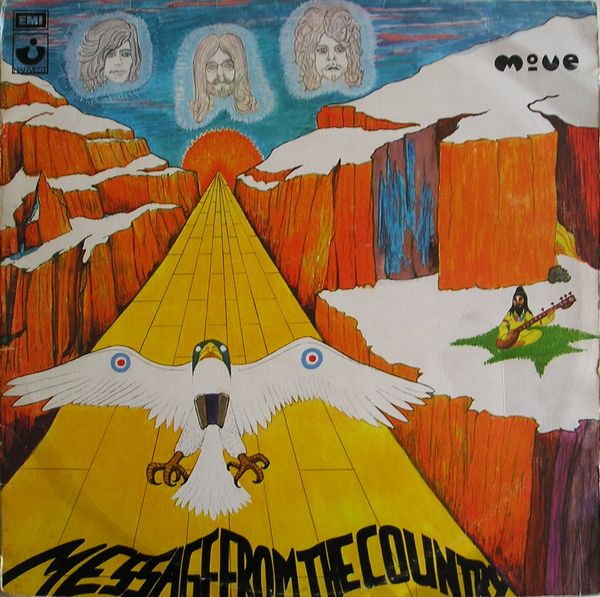 Message
From the Country (July 1971), **1/2
Message
From the Country (July 1971), **1/2
A continuation of Looking
On,
but the songs are weaker. Down now to just Bevan, Lynne and
Wood
(on lead bass among everything else), The Move still relied
far too much on Wood to bulk out their sound. Frankly, the
band
needed a goddamn arranger, instead of Wood just pipping into a recorder
and playing a few diddly notes, with maybe an oboe underneath playing a
slower diddly part, while the band mentally calculates how many minutes
of material they still need for an album. (Also, Wood and
Lynne
really liked George Harrison's little slide parts). The
album's
better tracks include the pretty chill acoustic rural trip of the title
track, the "Brontosaurus" knockoff "Ella James," which is between
power-pop and boogie, and Wood's buzzed up "Until Your Mama's Gone"
which is pretty good for a song which could fit aside a Seger nostalgia
track. Beyond that, there's more fake Beatles ("The
Minister",
the McCartney-goes-retro "My Marge"), and tributes to a vaguely
homicidal Elvis ("Don't Mess Me Up") and Tennessee
Ernie
Ford (the Bevan-sung "Ben Crawley Steel Company" which is a bit low for
even him). Not all the cribbing is bad, and Lynne's "No Time"
sounds kin to Parachute,
with a relaxed feeling and complicated vocal harmonies. (Not
the
annoying ones Lynne used on their last album). But other
ideas
like Wood's "It Wasn't My Idea to Dance," which tries to use his
octopus's bevy of instruments for rock + Eastern European folk, does
not work. Nothing with the endless running times of some of Looking On's
tracks, which is good, but still way too much reliance on
instrumentation rather than interesting notes.
At least the album's production is a bit better, which is even more
noticable if you listen to the CD's bonus tracks. (If they
substituted most of the album for the bonus tracks, it would get a much
higher grade). The band was still releasing singles, which
have
more straightforward production (and plenty of fake-Harrison slide
accents). "Tonight", "Chinatown" and "Do Ya" are all very
good
songs from singles (putting aside any possible racism in the middle
song), pretty confirming my suspicion that a single collection is the
only Move album you need. "Do Ya" is also probably the best
thing
Lynne ever did with the band, with his clanging power-pop strongly
resembling Todd Rundgren's overdub masterpieces.
 Something
Else From the Move EP
(rec. Feb. 1968, rel. Jun. 1968), ***
Something
Else From the Move EP
(rec. Feb. 1968, rel. Jun. 1968), ***



 Message
From the Country
Message
From the Country